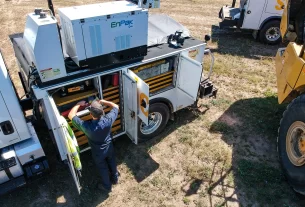Welding inspection is an essential aspect of welding, as it helps to ensure the safety and quality of welded products. To achieve this, welders and inspectors use various tools to detect defects in welded joints and identify areas that require repair or improvement.
In this article, we will discuss the different welding inspection tools that are commonly used in the industry. From visual inspection tools to ultrasonic testing equipment, we will cover everything you need to know about these tools and how they can help improve your welding practices.
Visual Inspection Tools
Visual inspection is one of the most basic forms of welding inspection, but it is also one of the most important. By visually inspecting a welded joint, welders and inspectors can detect surface defects such as cracks, porosity, and undercutting.
Here are some common visual inspection tools used in welding:
1. Magnifying Glass
A magnifying glass is a simple tool that can be used to inspect small details on a welded joint. It is especially useful for detecting tiny cracks or surface imperfections that may not be visible to the naked eye.
2. Flashlight
A flashlight is another useful tool for visual inspection. By shining a light on a welded joint from different angles, welders can detect surface irregularities such as porosity or undercutting.
3. Borescope
A borescope is a more advanced visual inspection tool that allows welders and inspectors to see inside narrow spaces on a welded joint. This tool is particularly useful for inspecting the inside of pipes or other complex structures where visual access is limited.
Magnetic Particle Testing (MT)
Magnetic particle testing (MT) is a non-destructive testing method that uses magnetic fields to detect surface and subsurface defects in ferromagnetic materials. This method is commonly used in industries such as oil and gas, aerospace, and automotive manufacturing.
Here are some common MT tools used in welding:
1. Yoke
A yoke is a handheld tool that generates a magnetic field around a welded joint. By applying a magnetic particle solution to the surface of the weld, any defects in the material will be revealed by the particles clustering at the site of the defect.
2. Prods
Prods are another type of MT tool that are commonly used for inspecting welded joints. They work by generating a magnetic field between two electrodes, which can detect surface and subsurface defects in ferromagnetic materials.
Ultrasonic Testing (UT)
Ultrasonic testing (UT) is another non-destructive testing method that uses high-frequency sound waves to detect defects in welded joints. This method is particularly useful for detecting internal defects such as cracks or porosity.
Here are some common UT tools used in welding:
1. Ultrasonic Flaw Detector
An ultrasonic flaw detector is a handheld device that sends high-frequency sound waves through a welded joint. By analyzing the reflections of these sound waves, welders and inspectors can detect internal defects in the material.
2. Transducers
Transducers are another important UT tool that are used to transmit and receive ultrasonic signals during an inspection. They come in various shapes and sizes depending on the application, and they can be used to inspect different types of materials and geometries.
Radiographic Testing (RT)
Radiographic testing (RT) is a non-destructive testing method that uses X-rays or gamma rays to produce an image of the internal structure of a welded joint. This method is particularly useful for detecting internal defects such as cracks or porosity.
Here are some common RT tools used in welding:
1. X-ray Machine
An X-ray machine is a powerful tool that emits electromagnetic radiation to create images of the internal structure of a material. In welding, X-ray machines are commonly used to detect internal defects in welded joints.
2. Film
Film is another important RT tool that is used to capture images of the internal structure of a material. During an inspection, a piece of film is placed behind the welded joint, and the X-ray or gamma rays pass through the material to create an image on the film.
Conclusion
In conclusion, welding inspection tools are essential for ensuring the safety and quality of welded products. From visual inspection tools to ultrasonic testing equipment, there are various types of tools that can be used to detect defects in welded joints and identify areas that require repair or improvement.
By understanding the different types of welding inspection tools available, welders and inspectors can make informed decisions about which tools to use for specific applications. This can help to improve the efficiency and effectiveness of welding practices, leading to safer and higher-quality welded products.
References:
1. Welding Inspection Handbook AWS
2. Welding Inspection Technology by Steve Hoerner
3. American Society for Nondestructive Testing (ASNT) – https://www.asnt.org/
4. International Institute of Welding (IIW) – https://www.iiwelding.org/




